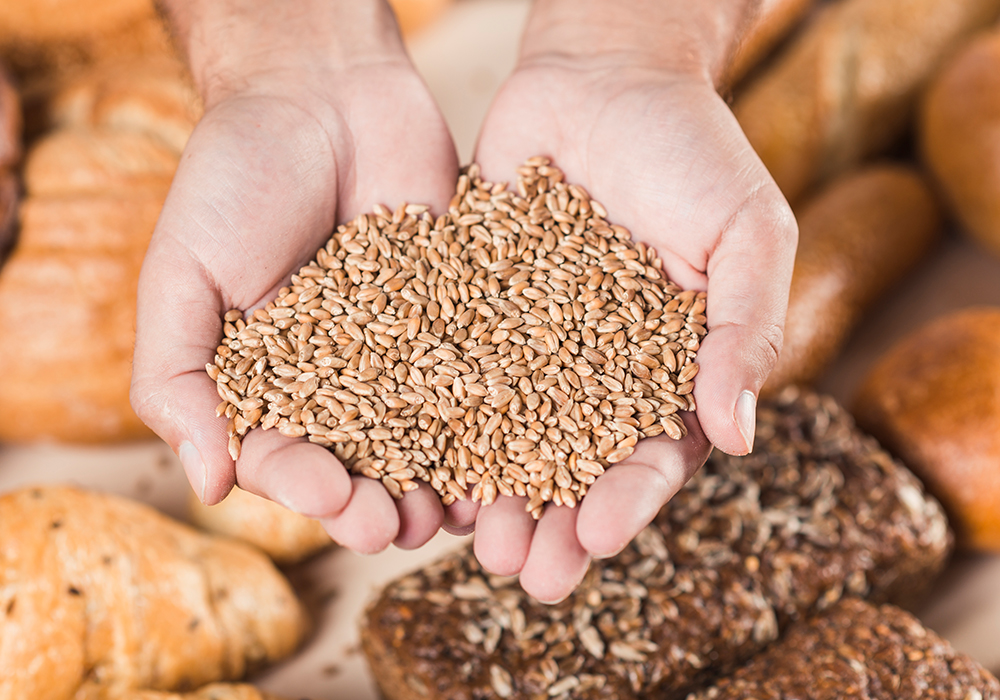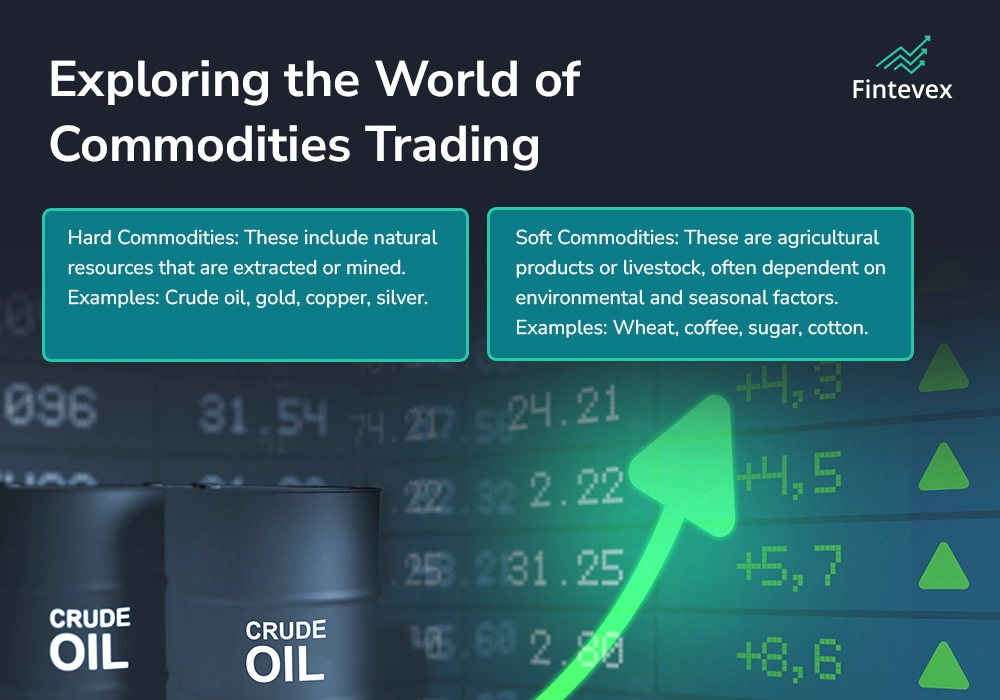Commodities trading is the oldest form of trading worldwide and until today plays a significant role in the economy of most countries. Commodity, in the general sense, is a physical product that can be bought and sold and comes in two main groups, hard and soft. Among the hard are included raw materials such as crude oil and gold, and agricultural products such as wheat and coffee.
Commodities trading delivers very high profits as much as it can deliver high risks resultant from market volatility. The very fundamentals of commodities trading, types of different commodities, and most effective strategies have to be known to travel successfully in this market. This article will define the essentials of commodities trading plus outline some strategies to consider for 2025.

What is Commodities Trading?
Commodities trading is the act of dealing with raw materials or primary agricultural products on the floor of the Chicago Mercantile Exchange (CME) or the London Metal Exchange (LME), among other exchanges. Ideally, a trader in these markets makes profits by buying at a low price and selling once the price increases, or by selling at a high price and then later buying when he expects the prices to drop.
The commodities market is driven by various factors such as:
- Global supply and demand: The availability of commodities directly influences their price.
- Geopolitical events: Conflicts, trade wars, and political instability can impact commodity prices.
- Weather conditions: Weather events, like droughts or floods, can significantly affect agricultural production, influencing prices.
- Economic data: Reports on economic growth, inflation, and other indicators can move commodity prices.
For many traders, the goal is to take advantage of these price fluctuations, whether they are short-term swings or longer-term trends. Understanding these market drivers and how they influence prices is key to developing a successful strategy.
Types of Commodities
Commodities can be broadly classified into hard commodities and soft commodities, each with unique characteristics and trading dynamics.
- Hard Commodities: Directly related to the extraction or mining of natural resources.
- Examples: Crude oil, gold, copper, silver.
- Hard commodities are typically more influenced by global supply and demand and politics.
- Used mainly in industrial applications, they tend to have broader economic implications.
- Soft Commodities: Agricultural products and livestock make up soft commodities, mostly dependent on environmental and seasonal factors.
- Examples: Wheat, coffee, sugar, cotton.
- Soft commodities are more responsive to the climatic conditions, not excluding the harvest yields and other regional factors of production.
- Prices can fluctuate dramatically based on the weather or changes in global consumption.
The difference in these groups influences their trading strategies. For example, a seasonal price swing might be more evident in the trade of soft commodities than it is in hard commodities, which are more prone to political decisions or economic global cycles.
Why Trade Commodities?
Traders and investors choose commodities for several reasons. These include diversification, speculation, and as an inflation hedge.
- Diversification: The price movements of commodities often do not correlate directly with stocks or bond markets, therefore having commodities in an investment portfolio can add a certain degree of diversification. This can hence act as a hedge when market downturns occur.
- Hedge Against Inflation: Traditionally, gold and oil are considered strong commodities when it comes to acting as an inflation hedge. With the rise in inflation, the value of fiat currency decreases, but most tangible assets hold their value and even appreciate.
- Speculation: Commodities can also be considered as a speculative investment. Traders seek to take advantage of the volatility in prices by speculating whether the price of a commodity will increase or decrease, and then base their informed decisions on market analysis.
For instance, if crude oil prices fall due to overproduction, then one can short to gain from the fall. On the contrary, if ever any longs from the side that traders are getting long on oil due to some geopolitical unrest that is likely to crimp the global oil supply, and hence lead to a price surge.

How Commodities Trading Works?
Commodities get traded chiefly through futures contracts. A futures contract is an agreement to buy or sell a commodity at a specific price agreed upon today for a future delivery date. In so doing, the buyers and sellers secure the price and eliminate any possible benefits from price fluctuation later on.
- Futures contracts: These are agreements to buy or sell commodities at any agreed price in the future. They are contracts that you are likely to trade with institutional traders or speculators and companies that want to hedge against price changes.
- Spot market: You can also buy or sell commodities for immediate delivery in the spot market. Although it is used for agriculture, this is not a common practice.
- ETFs and Funds: Exchange-traded funds (ETFs) and mutual funds focused on commodities are more convenient ways of investing in commodities without having to take possession of the physical assets for individual investors who do not wish to manage tangible commodities or futures contracts.
These methods of trading make it possible for traders to speculate on commodity prices and potentially profit from both short-term and long-term price movements.
Commodity Trading Strategies for 2025
Necessity of a powerful approach to operate the commodities market. Below here, the most common methodologies that a trader can imply in 2025:
- Trend Following
This involves identifying and trading on the direction of the established market trend. The commodities are bought on upward trending and sold on downward trending.
- Pros: Can be highly profitable in trending markets.
- Cons: Requires patience and the ability to identify trends early.
- Contrarian Trading
Contrarian traders go against the grain of market sentiment, buying when the majority of traders are selling and vice versa. This strategy is based on the belief that the market often overreacts to news and events.- Pros: Can lead to significant profits when the market corrects itself.
- Cons: Requires excellent timing and can be risky if the market continues in the opposite direction.
- Seasonal Trading
Certain commodities, particularly agricultural ones, experience seasonal price movements due to planting cycles, weather patterns, and harvest seasons.- Pros: Offers predictable patterns based on historical data.
- Cons: Can be impacted by unpredictable weather events or global supply disruptions.
- Hedging
Hedging is when a person takes a position in the market that is exactly opposite to what they hold in the commodity in order to get protected from the adverse price movement. For example, if a farmer sells the wheat futures to fix the price for his crop, then this is known as hedging done by that farmer.
- Pros: Protects against downside risk.
- Cons: If the market moves favorably, then the profit potential is also limited.
These strategies are typically amalgamated on the basis of individual risk profiles, market conditions as well as meeting the objectives of the trader. It is with much success that a good number of traders mix multiple strategies in such a way that will help them manage risks as well as increase their chances of being successful.
Risks in Commodities Trading
Commodities trading can be very profitable, but it carries with it much higher risk compared to other traditional forms of investment. Below are the most common risks associated with commodities trading:
- Market Volatility: Commodity prices can easily be disrupted by any form of supply conflict, a mere geopolitical event, or a demand shift. In such volatilities, there could be mouthwatering profits but, even more so, excruciating loss.
- Leverage Risk: The trading of commodities goes hand in hand with leveraged funds, which translates to borrowing money to increase position. More profit can be derived from this, but the downside potential also multiplies if the market goes against the position.
- Regulatory Risk: Changes in government regulations or policies can have a direct implication on commodity prices. Traders need to keep themselves aware of such changes that might take place in policies relating to commodities, especially politically sensitive ones like oil.
Conclusion
Commodities trading presents both opportunities and challenges. The market is incredibly complex, and inseparable with commodities’ volatility, which means a driver must have a very strong understanding of the market drivers, coupled with a clear strategy and risk management techniques.
As we step into 2025, the pathway to prospering in the trade of goods will be by being adaptable, by keeping a keen watch on the trends in markets, on the geopolitical happenings, and on the economic data which allows the traders to make decisions that will more likely lead to success in the constantly transforming market of goods.

















